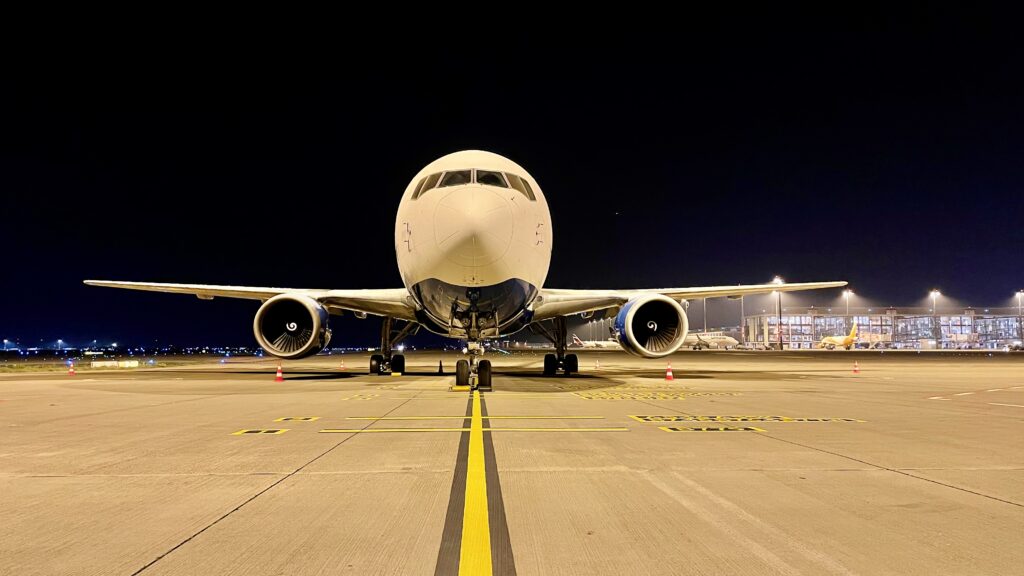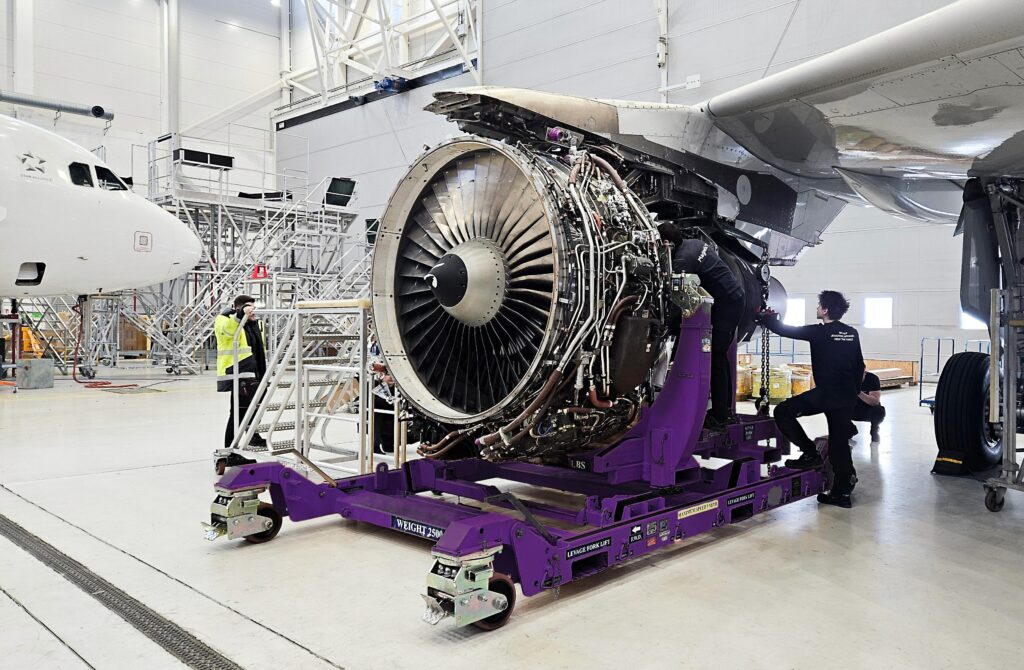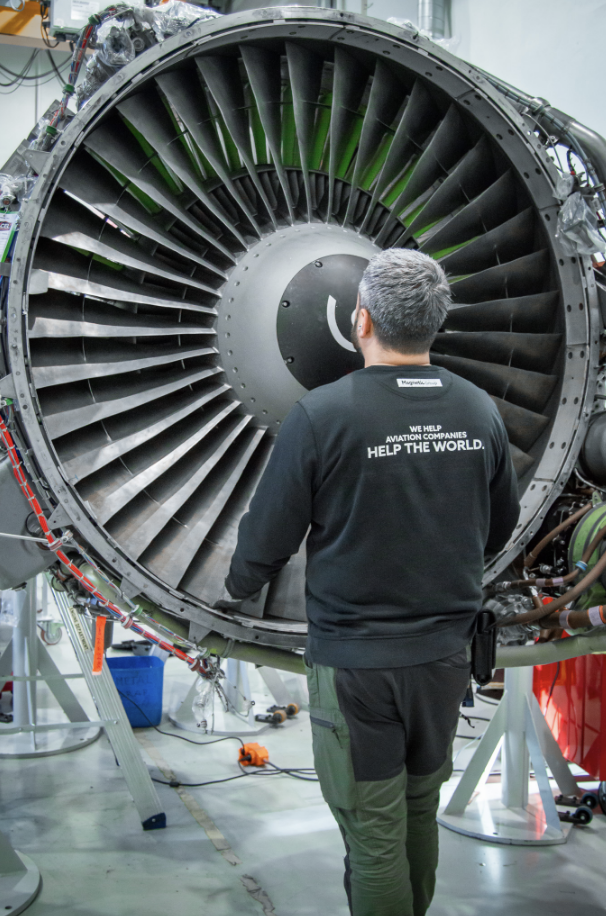Latin American Aviation Market Outlook and How it Compares to North America

One of the emerging and increasingly important regions in aviation is Latin America. Prior to COVID-19, Latin America was forecasted to be one of the fastest growing regions in the world in terms of commercial aviation.
According to a report from BusinessWire, “the commercial segment of the Latin America aviation market [was] anticipated to register the highest CAGR (over 2%) through 2024. In terms of air passenger traffic, Brazil registered a 3.3% year-on-year growth during the 2017-2018 period. Azul, LATAM, GOL, Volaris, and JetSmart are some of the major airlines operating in the region and have huge order backlogs.”
The Latin American MRO market was forecasted to have a revenue of $1.5 billion during 2020, about 60% less than in 2019, when it reached $4.7 billion. Before the pandemic, the Latin American market was forecasted to reach $6.3 billion in 2025.
Given its prominent role in aviation, we decided to talk to both an industry and regional expert to get the lowdown on Latin American aviation, compare it to North America and understand how it can compete with North America. We sat down with Magnetic Trading’s Sales Director Christian Mejia to extract his knowledge on the topics.
What do you mean by the “aviation market”?
Market is defined by the supply and demand of a product or service within a geographical region. There are three different sectors in aviation: Commercial, General & Military. The aviation market consists of sales & services across these sectors.
Whether it’s being an OEM (Original Equipment Manufacturer)/distributor, MRO (Maintenance, Repair and Overhaul/Operations)/repair shop, or aircraft parts supplier (just to name a few services), these all contribute to the aviation industry. Such key services are the backbone of the aviation industry, keeping aircraft serviced and flying.
What are the biggest differences between Latin and North America? What similiarities do they have?
In the aviation sector, when we are discussing Latin America, we are referring to Mexico, Central America, South America & The Caribbean Islands. Meanwhile, the North America aviation market consists of USA & Canada.
The main difference between Latin & North American markets would be the differences of cultures and political viewpoints, but one must really analyze the differences in economical levels. Although we are seeing an emergence of middle class in Latin America, along with an increase of trading/commerce and a growing appetite for travel, there are still vast levels of inequality and social exclusions throughout countries in Latin America. These conditions play a heavy role in limitations to sustaining levels of growth including infrastructures such as airports, maintenance facilities, manufacturers, etc.
The North America aviation industry is more matured and includes various OEMs located throughout their region. Although Latin America economic levels had been expanding yearly in the past, it still had a sluggish growth rate compared to North America prior to the pandemic. Latin America has had social, political, and economical challenges prior to Covid 19 unfortunately.
Latin America has had the highest number of reported Covid-19 related deaths compared to any other region in the world. Although this outbreak caused a huge impact in the global aviation industry, it harshly affected Latin America significantly more than North America due to various government lockdowns. North America has proven to be one of the strongest performers in the road to recovery as the domestic market bounced back quickly and remains strong. With border closings and travel restrictions, domestic travel and cargo market were heavily relied on to keep airlines afloat. Aeromexico, Avianca and LATAM were three major Latin American airlines that had to file for Chapter 11, declaring bankruptcy as a form of restructuring during the pandemic. There were no major airlines in North America that had to undergo this same process as governments in the region were more supportive.
The geographic environments are another difference we must analyze when distinguishing the Latin and North America markets. Many countries in Latin America have very little to no rail/road systems therefore traveling by land may not be accessible in Latin America. We have some major Latin America airlines who are working on bridging these road gaps throughout the region. Mexico’s VivaAerobus implements a combo purchase of flight & bus transportation connecting to over 100 destinations throughout Mexico. This is why air travel in Latin America is relied on in terms of connecting bordering countries within the region.
Similarities in the Latin & North America market are that they are growing markets for both leisure & business. Between commercial passenger, charter, air ambulances and cargo operators, there are roughly 185 airlines in Latin America and about 260 airlines in North America, with a number of new startups on the way.
We have also seen a growth and expansion of low-cost airlines in both Latin & North America. They especially became a pivotal role in the recovery of the aviation industry. These low-cost carriers were built on keeping minimal costs so when planes were grounded and routes were eliminated, reducing losses was already within their plans. As we have seen the growth of low-cost carriers in North America such as Allegiant, Frontier, Spirit, Southwest & Jet Blue; the list of successful low-cost carriers in Latin America has also been increasing as we have seen with FlyBondi, JetSMART, Azul, GOL, Viva Air, Volaris & VivaAerobus just to name a few.
What can the Latin America market learn from the North America market – and vice versa?
Latin America has learned to invest more into the aviation sector in an effort to develop their aviation infrastructures. We are seeing more developments of airports throughout countries in Latin America and enhancing capacity to support the growth needed to attract passenger traffic. The president of Mexico just recently inaugurated a new airport, called Felipe Andres International Airport in Mexico City, due to the amount of demand in and out of the country’s capital. Mexico City previously had plans to build a state-of-the-art massive international hub and move all air traffic to this one airport but a change in the political office caused the cancellation of this project as an effort to reduce costs. It was also announced that Mexico plans to open an airport in the popular city of Tulum which attracts a high number of tourists in a yearly basis.
In the Dominican Republic, government officials are looking into an expansion proposal for Santiago International airport as the island is seeing growth in the aviation sector with new Dominican start-up airlines in the making. Investing in start-up airlines is another new trend for Latin America. Arajet, AvA Airways, & SkyCana are 3 Dominican airlines that have either launched or have plans to be based out of Santiago International Airport.
In addition, you have EQUAIR, out of Ecuador, and Ultra Air, out of Colombia, who both recently launched operations. Other notable start-up airlines to keep an eye out for are Ecuatoriana Airlines (Ecuador), Nella Regional Airlines (Brazil) & Coral Jet (Bermuda) who seem to be next in line.
I believe the aviation industry in Latin America has done a great job reviewing growth strategies that can be mimicked in North America. These strategies include adopting to innovative methods, creating efficient workforces, planned supply chain processes, increase of products/services, airline mergers and partnerships, creating new routes and markets, and reviewing competitive pricing.
What are the key characteristics of each market that you think wouldn’t translate into another?
The road to recover is heavily depended on the market & reason for traveling in the region. Domestic travel has already shown signs of strength in North America while we may be seeing a different story in Latin America. International demand will be the slowest to recover due to travel restrictions, vaccine mandates and quarantining processes. Latin America & the Caribbean Islands are built around tourism so as people start flying again for leisure this will help stimulate the economy within the countries. Mexico has benefited from having no travel restrictions which has supported USA travel into each region. Mexican airlines such as Volaris and VivaAerobus have seen an increase to the road of pre-pandemic levels seizing these opportunities to expanding routes in USA.
What are some key statistics that are worth knowing and which could provide signals of what’s ahead?
The aviation market in Latin American aviation is projected to increase over a CAGR (Compound Annual Growth Rate) of 5% from 2022-2027. The International Civil Aviation Organization (ICAO) strongly believes that the Latin America region could be close to pre-pandemic levels by the end of 2022.
As mentioned earlier, three of the big Latin America players (Avianca, Aeromexico & LATAM) had all filed for Ch. 11 bankruptcy but nearly two years since these announcements, the road to recovery in Latin America is looking very promising. We have recently seen Avianca & Aeromexico announcing their exit from this bankruptcy process with LATAM soon to follow.
Besides competing, are there synergies and opportunities for the two markets to work together?
We have already witnessed a combined force when Latin America & North America airlines get together in giving travelers an ultimate experience. American Airlines & GOL entered in a codeshare agreement which will create one of the largest joint frequent flyer programs out there. This will also increase operations to new destinations for both airlines.
American Airlines also signed a letter of intent with JetSMART to create a partnership that will unite both airlines within their regions. United Airlines has been a huge support for Avianca throughout their Ch. 11 process as they worked on a proposed venture with an option to take equity stake. United Airlines also has a minority stake with Azul. LATAM and Delta have also partnered up to earn & redeem miles together through their frequent flyer programs.
With these North American Airlines partnering with Latin American airlines, it has been a strategic approach in order to create new routes for travelers and connecting the regions. We have seen American Airlines, Spirit, Frontier, and United Airlines add new routes to Latin American countries since the pandemic.
What role will technology play?
Technology will continue to play a huge role in the growth of the Latin America aviation market. Airbus has predicted that Latin America might require about 2,400+ new airplanes by 2040 to accommodate the increase of travel demand. The majority of the demand in that region comes from narrow-body aircrafts due to the affordable air travel within the regions which will then replace the older aircrafts currently flying. Narrow-body aircrafts have proven to improve fuel burn while keeping costs low making these planes a benchmark for Latin America airlines.
We have seen a trend of Latin America airlines placing huge orders on new aircraft. For example, Avianca placed a recent order with Airbus for 88 A320Neos which should be delivered by 2031.
Due to the pandemic, the day-to-day operations has shifted more to a digital world. In Latin America, they have adopted this digitalization approach to oversee aircraft’s serviceability status by collecting data through artificial intelligence. This has helped the planning process & streamlining airline operations which in addition brings more techy-savvy individuals to the labor field.
As many employees in the aviation industry had to work from home or remotely, video conferencing and other technology was used for communication purposes. The future generation of electric and hydrogen aircrafts have been a topic that seems to be heating up as of recent. These alternative options are constantly being researched & invested by OEMs for future developments.
Another advancement in development that certain Latin America airlines are now putting in place is a “Book Now & Pay Later” method. Just recently Copa Airlines (Panama) announced they have provided a flexible payment option allowing customers to pay for their flights in 3, 6 or even 11 monthly installments. This can be a trend going forward making it more convenient for customers to afford flying despite inflation and fuel price increases.
Is there a difference in the talent and opportunity to recruit in Latin America and North America?
Resources are critical when it comes to finding talent and recruiting individuals in aviation. As Latin America is known to have an unstable economy in some countries, these resources might not be as great as those presented in North America. There may also be a lack of support from some governments in the training or recruitment in Latin American countries which can affect the growth of the market in the region.
How do processes differ in Latin America and North America?
With travel restrictions still in place in majority regions of the world, keeping up with the different country limitations has been a mission. I believe it is less stressful flying within the North American region compared to Latin America. With so many countries that make up Latin America, getting familiar with the rules for international traveling has been a hurdle for these airlines especially as there are constant changes. These travel restrictions cause roadblocks on the recovery stages which in turn makes processes harder to put in place.
Christian Mejia holds 9 years of experience in the industry of commercial aviation. From previously working at a family-owned repair shop, where he gained his technical background, and for a global parts supplier, where he learned the demand and requirements of airlines, Christian has grasped the waves of the aviation commercial market. He has helped developed relationships within airlines throughout Latin & North America and now brings the presence of the Magnetic Group to these regions.















